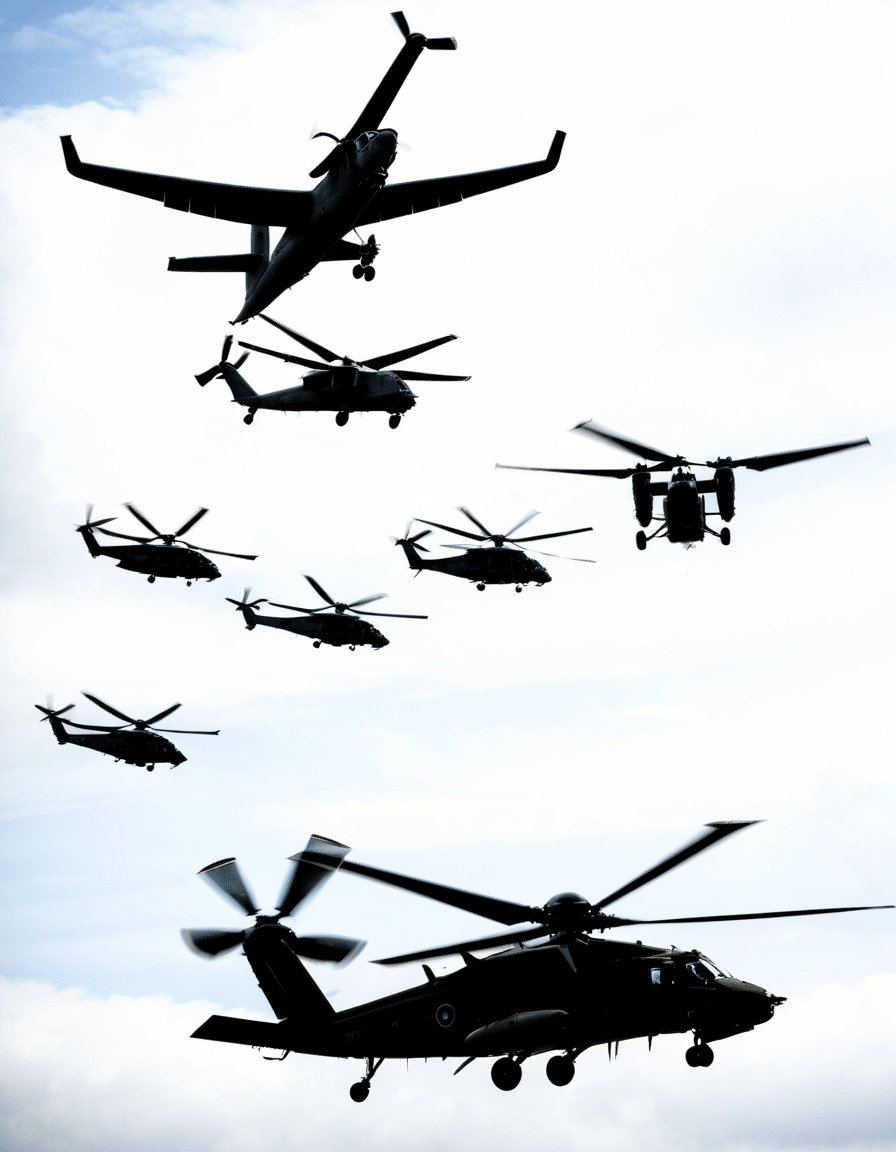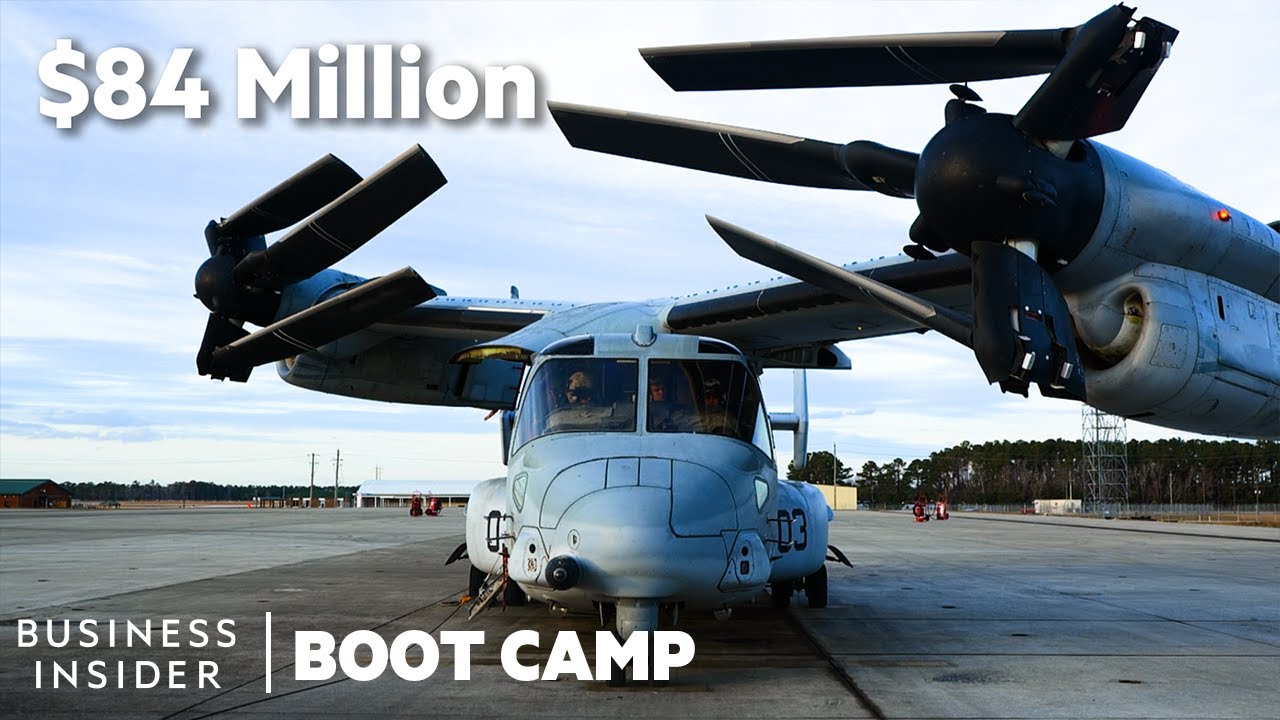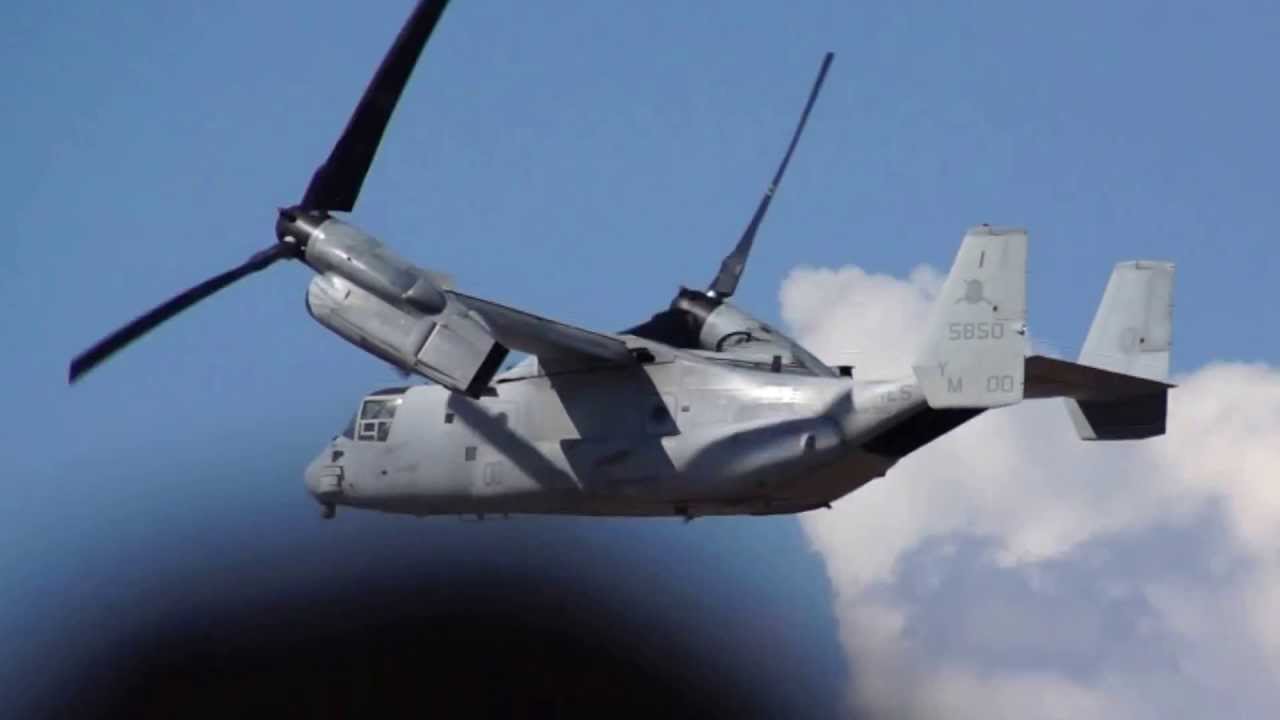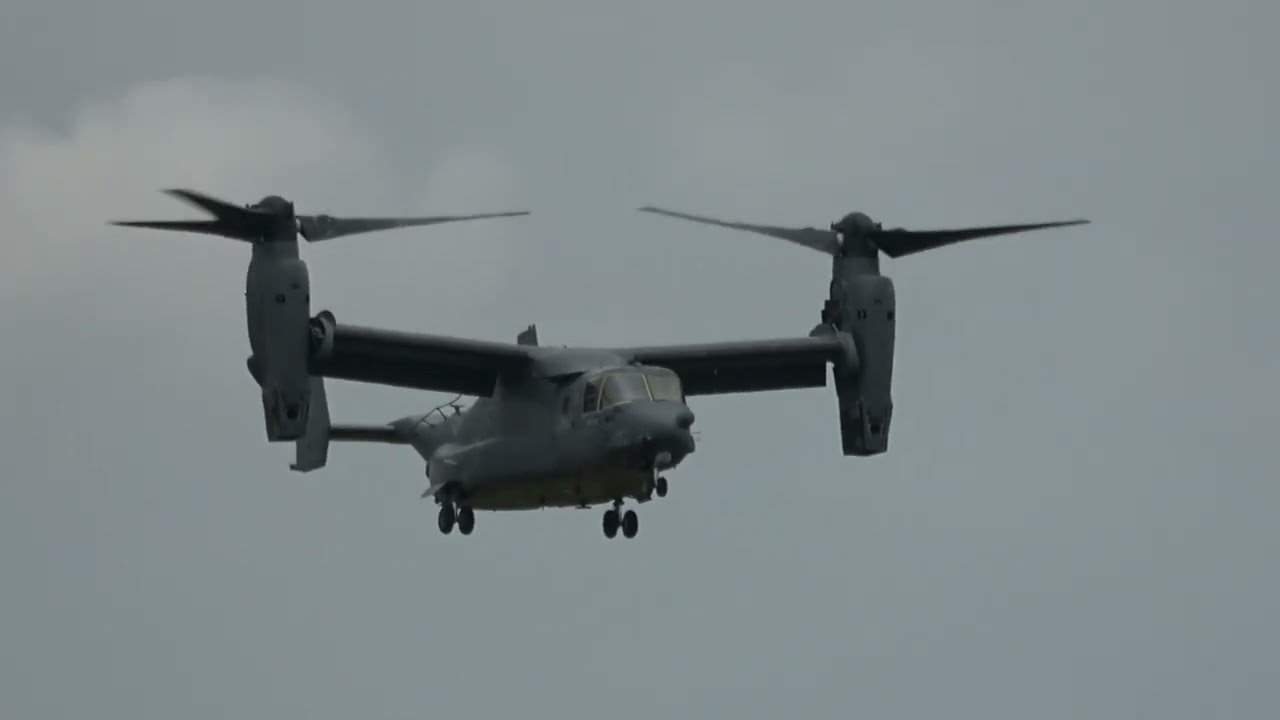The Osprey aircraft, particularly the V-22 Osprey, stands as a groundbreaking innovation in modern military aviation. This sophisticated aircraft has transformed how military operations are conducted, combining vertical takeoff and landing (VTOL) capabilities with the speed and endurance of a traditional fixed-winged plane. As we explore the impressive features and capabilities of the Osprey aircraft, it becomes clear that this aircraft is more than just a mode of transport; it redefines strategic military execution.
7 Key Features of Osprey Aircraft Transforming Military Operations
At the heart of the Osprey’s design is its tiltrotor technology. This allows the aircraft to transition smoothly between helicopter-like vertical flight and horizontal flight like an airplane. Such versatility is invaluable in combat scenarios, enabling rapid deployment of troops and supplies where they’re needed most. This feature keeps military forces agile, flexibly adapting to ever-changing battlefield dynamics.
The V-22 Osprey boasts impressive speed, reaching over 300 knots, while maintaining a range of up to 1,000 nautical miles. This performance drastically reduces transport times, making it an essential asset in rapid military operations. When speed is critical to mission success, the Osprey aircraft steps up to the challenge, proving itself as a go-to solution.
The ability of the Osprey to take off and land vertically opens up a wealth of operational possibilities. In urban warfare, where traditional runways are often unavailable, this function allows military forces to deploy in confined areas. This capability is especially crucial during disaster relief when every second counts and resources must be mobilized without delay.
Unlike many conventional helicopters, Osprey aircraft can transport significant payloads, including heavy equipment and vehicles. This enhanced cargo capacity allows military logistics to operate more efficiently. Troops can get essential gear directly into the field, cutting down on the need for ground conveyance.
The Osprey’s in-flight refueling capabilities extend the operational range of missions extensively. This innovation means it can conduct extended recon missions without returning to base for fuel. Whether patrol missions or rapid response operations, being able to stay airborne longer gives militaries a notable advantage on the strategic chessboard.
Equipped with state-of-the-art avionics, the V-22 Osprey promotes heightened situational awareness for pilots. Real-time data sharing not only improves navigation but also supports critical decision-making during missions. The integration of innovative technology ensures that crews operate with the best possible information at their fingertips.
The Osprey’s adaptability is a game changer. It’s designed not solely for troop transport; it can also serve in search and rescue missions, medical evacuations, and logistics support. This versatility enables military planners to deploy the Osprey across various branches and operational contexts, making it an indispensable tool in modern warfare.
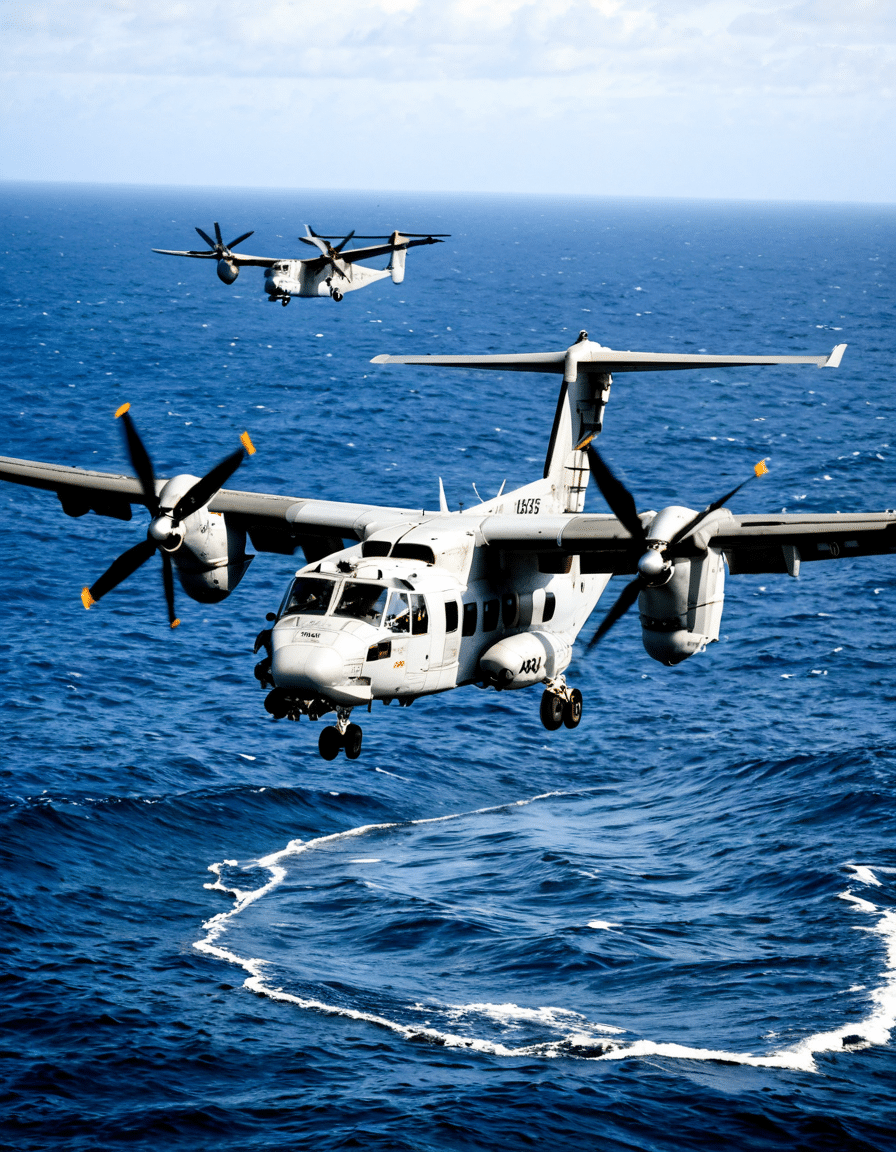
The Broader Impact of Osprey Aircraft on Military Strategies
The integration of Osprey aircraft into military operations has sparked a significant shift in how strategies are formulated and executed. With the aircraft performing many different roles, military forces can rethink their logistical approaches and tactics. Flexibility and speed have become paramount in modern battlefields, and these aircraft are central to achieving these aims.
Technological advancements continue to shape warfare, and the Osprey’s adaptability allows armed forces to stay ahead of potential adversaries. As militaries invest in improving these capabilities, the importance of the Osprey aircraft in upcoming conflicts becomes even more apparent. Resources are poured into refining and enhancing the aircraft’s functions, ensuring they remain at the forefront of military innovation.
As global conflicts evolve, it’s clear that traditional methods may no longer suffice. The Osprey aircraft embodies a fresh approach to military strategy, merging cutting-edge technology with practical tactical usage. In a world where uncertainty and rapid changes dominate, the need for responsive and adaptable military assets is bigger than ever.
Future Developments and Enhancements in Osprey Aircraft
Looking ahead, the potential for the Osprey aircraft to evolve is vast. Advancements in materials and design are already on the drawing board, with manufacturers exploring lightweight composite materials that could bolster speed and fuel efficiency. With fuel costs being a significant concern globally, these upgrades could prove pivotal as militaries strive for economical operational practices.
Moreover, continuous software upgrades to the Osprey’s avionics will enhance its operational efficiency. Better data processing and improved navigation systems promise to augment the aircraft’s already impressive capabilities. These developments signify a commitment to maintaining a tactical edge in defense capabilities and further solidify the Osprey’s role in military aviation.
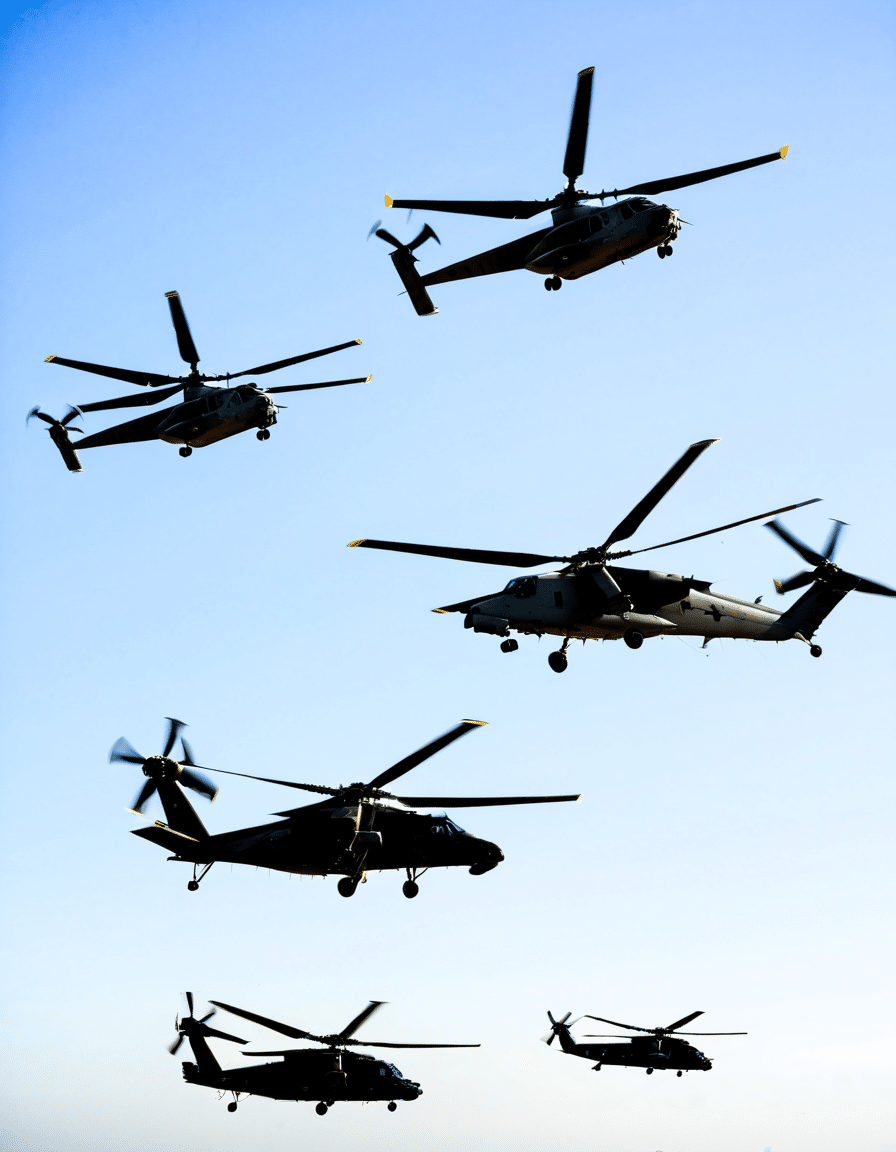
The Cultural Impact of Osprey Aircraft
The impact of the Osprey aircraft extends beyond the battlefield. It has made notable appearances in popular culture, including various media representations that shape public perceptions of military actions. Films like Lethal Weapon 3 have featured such aircraft, contributing to discussions about military technology in pop culture contexts.
Moreover, the Osprey has become a point of interest for organizations like Friends Of Form, raising awareness about military operations and their complexities. As societies become more informed about these advancements, there’s an opportunity for more constructive dialogue regarding military actions and innovations.
This cultural dialogue contributes to a more educated citizenry, helping the general public navigate discussions about modern warfare. Awareness of tools like the Osprey aircraft enriches conversations about defense and security on local and global scales.
Final Thoughts on Osprey’s Role in Shaping Military Aviation
Ultimately, the Osprey aircraft serves as a beacon of innovation in military aviation. Its multifaceted capabilities showcase how advanced technology can shape operational strategies and responses. As militaries worldwide aspire to enhance their effectiveness, the Osprey model will undoubtedly influence future aerospace developments.
The interplay between evolving technology and military strategy illustrates a future where adaptation is key to sustaining superiority. With the Osprey leading the charge, new developments in military aviation are poised to continue redefining how nations approach warfare in the coming decades. As we look forward, the precedent set by Osprey aircraft stands testament to the transforming landscape of military capabilities.
Osprey Aircraft: Redefining the Skies
Amazing Facts About Osprey Aircraft
The osprey aircraft isn’t just another marvel of modern military engineering; it’s a true game changer! This hybrid creature boasts the vertical takeoff capabilities of a helicopter but can soar like an airplane. With a speed of over 300 knots, it’s faster than most traditional military helicopters, getting troops to where they need to be in a jiffy! Imagine a Texas Longhorns men’s basketball game—a thrilling atmosphere where speed and precision matter. Similarly, the osprey’s ability to zip through various terrains makes it an indispensable tool for U.S. forces.
Ever heard of the beauty of San Moritz? Just like that picturesque location captures a fusion of nature and adventure, the osprey aircraft offers a synthesis between rotorcraft versatility and fixed-wing efficiency. Its two tilting rotors allow it to switch modes seamlessly, making it the Swiss Army knife of the sky, able to adapt to diverse mission requirements. Plus, with its capability to perform operations in restive environments, it’s like Tiger Woods launching a flawless shot under pressure—precision, versatility, and focus all rolled into one!
Unique Uses of Osprey Aircraft
What’s even better? The osprey aircraft supports a variety of missions—from troop transport to medical evacuation. For instance, picture Arnel Pineda hitting just the right note in a live concert; that’s how precise the osprey is when executing missions with swift agility. It can land in tight spots where conventional aircraft can’t, making it a vital piece in humanitarian aid and disaster relief, much like how the accessibility of North Dakota public Records helps communities stay informed during emergencies.
In a world where adaptability matters more than ever, the osprey aircraft stands tall, ready to tackle the unique challenges of each mission. Just like choosing the right medium Haircuts For Women can transform a person’s look, having the osprey in the military’s arsenal transforms how we approach aerial combat and support operations. The design isn’t just about efficiency—it’s about redefining what we expect from military aviation! With the advances in aerial technology, we may just be witnessing the beginning of a new chapter in defense strategies.
